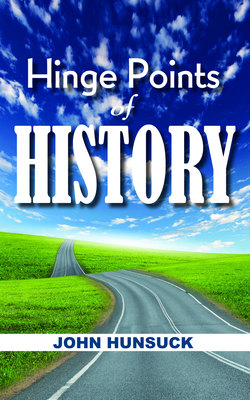Читать книгу Hinge Points of History - John Hunsuck - Страница 6
На сайте Литреса книга снята с продажи.
Chapter II Covenant To Covenant Moses to Jesus
ОглавлениеAt this point in history, the inventors and explorers of the world have established several things which will allow accelerated progress:
1.Written communications and translations
2.Libraries and the recording of documents and histories
3.The basic four functions of mathematics: addition, subtraction, multiplication and division
a.Geometry and some trigonometry
b.The Golden Triangle: 3:4:5 (to set squares)
c.A close approximation of the ratio of perimeter to diameter of a circle, we call Pi
d.The simple tools: lever, inclined plane, wheel and axle, wedge and windlass
4.Standards of weights and measures
5.Time and season tabulations
6.Astronomical prediction (eclipses and conjunctions)
7.Government structure and money, coins of gold and silver
a.Representative government, Magi (or Senators)
b.Provincial governors and judges
c.Treaties and conventions
8.Codes of Law and punishment (Hammurabic and Mosaic)
9.Transport, trade and signals
10.Armed forces and simple weapons of war
11.Simple musical instruments
12.Poetry and song, beer and wine
13.Rudimentary hand tools of bronze and iron
14.Wells and irrigation, pots and buckets
a.Canals and water lifts, i.e. Archimedes screw
b.Dams and diversion weirs
15.Rudimentary food preservation, i.e. salt and drying
16.Agriculture and animal husbandry
17.Several religions, one monotheistic
18.Metal casting, bronze and iron articles
19.The Ten Commandments
20.Some healing arts, mainly herbal and some crude surgery (Ref 1)
Medical Arts
The future of mankind and the future of medicine are thought to be intertwined. Some people feel that the burden of helping mankind live more productive lives has fallen on the shoulders of the medical profession, supposedly relieving the individual from personal responsibility for his well being. Little is known about the origin of medical knowledge. It is believed to have developed from many uses of herbs and ritual practices.
Early health practices to fight disease were begun about 5,000 years ago in the Middle East by the Sumerians and were adopted by the Babylonians of Mesopotamia. Later, the Egyptians were influenced by these beliefs and practices. Myths and magic were mixed into the treatments of the sick. (Ref 1)
The ancient Chinese adopted the system of treatments based on opposing principles: the Yan and the Yin. The Yan principle was positive, masculine, assertive and light. The Yin principle was negative, feminine and passive and was signified by darkness, earth, moon, cold and moisture. The Chinese medical aim was to restore internal harmony. They used large amounts of herbs and potions, including some of the familiar ones used today. Opium was used as a painkiller and Kaolin was used for diarrhea. (Ref 2)
In the ancient Greek civilizations from about 1000 B.C., medicine was strongly influenced by the belief in numerous deities. Aesculapius is believed to have been a medical expert that became so venerated that magnificent temples were built in his honor along the Mediterranean Sea.
Many eminent physicians and scientists have made important changes and improvements in medicine, but only a few have had an influence that has lasted for centuries. Hippocrates is one of the earlier pioneers whose work continues to have an influence on society. He lived and worked at a medical school on the Greek Island of Cos. Born around 460 B.C., he was respected for being a great physician and teacher. The famous Oath attributed to him is based on the code of ethics that is still used today by sincere physicians. His system of diagnosis has laid the foundation for the systematic observation and problem solving currently used today. (Ref 3) Note the emphasis on ethics. Accident or design?
The weakness of medicine for years was a basic lack of understanding of anatomy and physiology. One basic myth, prevalent at that time, was that the body contained four humors: black bile, yellow bile, blood and phlegm and was directly associated with the four elements of earth, fire, air and water. Disease was thought to be the result of an imbalance of these humors and treatment was aimed at restoration of balance. Note the similarity to Yin and Yan.
The current list of inventions, discoveries and medical art is not complete, even for the stated time. Many of these records are available at the libraries. Some have even tried to date the findings based on archaeological evidence. The author has dated and gives credit to the investigator.
With this foundation, we shall now watch an acceleration of development, invention and discovery. Sadly, most of the original recordings were lost due to the deliberate destruction of opponent’s libraries and archives as wars swept over the known world throughout history. We know from archaeology that these findings were in use and at what stage of development, however, the names and dates of the inventors or discoverers are lost. The great archives of Babylon, Persia, Egypt and Greece were mostly destroyed. We now only have fragments to attest to their presence.
While Israel struggled with their development and understanding of their responsibility, the rest of the world pressed on, developing three things foundational to the coming of the next and crucial event of history.
